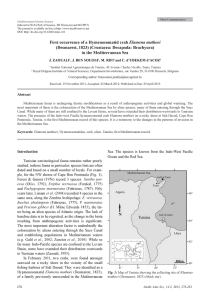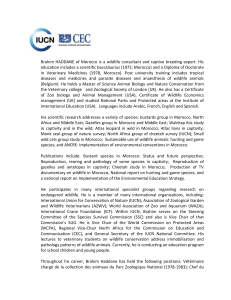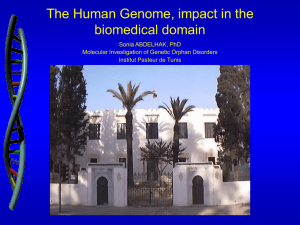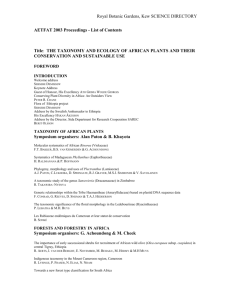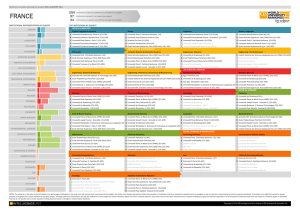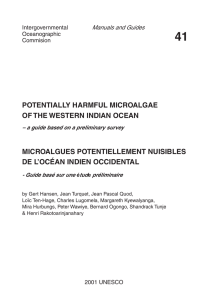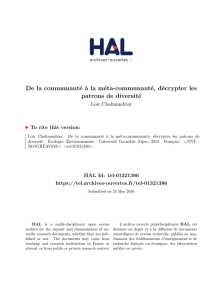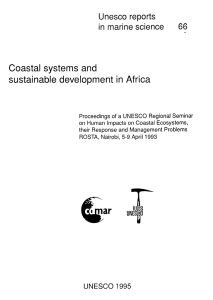Diapositive 1
advertisement
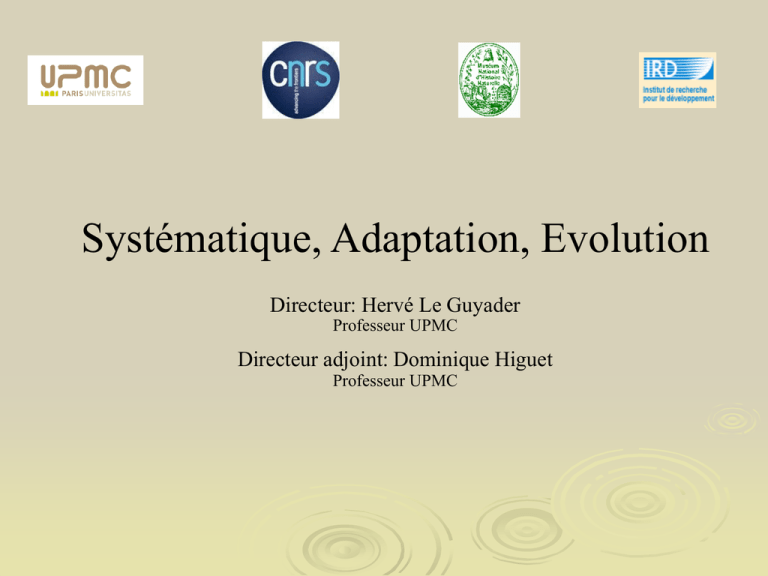
Systématique, Adaptation, Evolution Directeur: Hervé Le Guyader Professeur UPMC Directeur adjoint: Dominique Higuet Professeur UPMC Les Thématiques de Recherche Exploration de la Biodiversité Ecosystèmes chimiosynthétiques marins Interactions durables Génomique des organismes marins Les Equipes Exploration de la biodiversité Responsable Philippe Bouchet (MNHN) Phylogénie Responsable Guillaume Lecointre (MNHN) Evolution moléculaire en milieu insulaire Responsable Cécile Debitus (IRD) Espèces et spéciation Responsable Simon Tillier (MNHN) Evolution et développement du squelette Responsable Jean-Yves Sire (CNRS) Evolution et développement Responsable Michaël Manuel (UPMC) Génétique et évolution Responsable Dominique Higuet (UPMC) Adaptation et évolution en milieux extrêmes Responsable Bruce Shillito (UPMC) Symbiose Responsable Olivier Gros (UAG) Modélisation Responsable Philippe Lopez (UPMC) Plasticité des génomes en milieu hydrothermal profond Mathieu Piednoël, Caroline Esnault, Micheline Jacques, Spencer Brown, Eric Bonnivard and Dominique Higuet UMR 7138 Systématique Adaptation Evolution Team Génétique et Evolution UPMC - CNRS – MNHN - IRD Hydrothermal vent issues Highly variable in time and in space : 70 à 400°C - short vent lifetimes - temperature variations over few cm 4°C High biomass but small number of species : - less than 600 metazoan species described - 2500 individuals/m2 for R. exoculata Pe na eid ae Ari sta e id ae Al Alv pheid ino ae ca r id ida e Aty ida Cr an e go nid ae Hy po litid Op ae lop ho Pa r id ae lae mo nid ae Pa nd alid By tho a g ra e eid ae Ca lap p id ae Ca n Ge crida e ca rci nid ae Gr ap s i da Le e uc os iida e Ma Oc jidae yp od ida Po e rtu nid a e Xa n Co thida en e ob itid Ga ae lat he ida e Hip p id ae Pa gu rid Po ae rce llan ida Ca e mb ari da Ne e ph rop i d ae Pa linu r id ae Sc ylla r id ae Genome size (pg +/- S.E.) Genome sizes of vent (black bars) and non-vent related species crustacean decapods Infraorder 40 5 1 35 30 3 25 5 20 15 4 10 1 8 1 4 8 3 1 4 5 2 1 3 1 6 3 1 6 7 9 1 3 4 1 3 5 4 0 Families From Bonnivard et al., Genome, 2009 0 2 1 2 4 2 1 4 3 5 4 2 1 4 2 3 4 1 0 ida e Pin nid a e Ca rdi ida e Ch am i d ae Do na cid Dr ae eis se nid ae Lu cin ida e Ma ctr i d Pe ae tric olid ae P Ps harid am a mo e b i i da So e lec u rt id a So e len id a e Te llin ida Ve e Ve nerid sic a e om yid ae 8 My til so pe tal ida Gly e cer ida He e sio n id ae Ne ph tyid ae Ne rei d Ph i yllo dae do cid ae Po lyn o id ae Sy llid ae Sa be llid ae Se rpu lida Sib e og lini d ae Alv ine l l i Pe da e ctin ari ida e Ch ry Genome size (pg +/- S.E.) Genome sizes of vent (black bars) and non-vent related species annelids bivalves Order 8 7 7 6 6 5 5 1 4 3 20 2 2 8 4 1 1 1 1 1 4 1 1 1 1 5 10 1 1 1 Families large GS that could reflect the amount of TEs in the genome From Bonnivard et al., Genome, 2009 Log10 (x+1) TEs percentage of the genome “Correlation” between genome size and abundance of TEs 2.5 2.0 1.5 1.0 0.5 0.0 0.0 0.5 1.0 1.5 2.0 2.5 3.0 3.5 4.0 Log10 (x+1) Genome Size (Mb) (Species that have been the subject of large-scale sequencing studies) From Gregory TR, Nature Reviews, 2005 Why are transposable elements interesting ? Mobile DNA (with promoter and coding sequences) that - are present in all organisms - show a great diversity and abundance - are major component of eukaryotic genomes (44% of the human genome), corresponding to « moderately repeated sequences » - have a great impact on genome evolution, as major factors of genome plasticity involved in stress response - Powerful genetics tools for population or phylogenic analyses A wide distribution of DIRS1-like elements Ynno1 Alvi1 Alvi2 Alvi3 Alvi4 Alvi5 Ypili1 Ypili2 Ycran1 Ypase1 Ymaja1 vent Ymur1 Ymur2 Ymur3 Yannu1 non vent Piednoel and Bonnivard, BMC evol biol, 2009 Take-home message Large genome size for vent species in contrast to results observed in other harsh and extreme environments increase in GS in correlation with an abundance of TEs in hypervariable environments Great diversity of TEs in the shrimp R. exoculata Abundance and huge diversity of «rare» DIRS1-like elements in vent shrimps and galatheid squat lobster 15 families of DIRS1-like in 16 decapod species Large diversity and wide distribution among decapods 1 species amoeba bracovirus ascidiacea anemone branchiopod 3 species 2 species insects zygomycetes sea urchins tetrapods 5 species 16 species 50% from Vents fishes decapods Piednoel and Bonnivard, BMC evol biol, 2009
